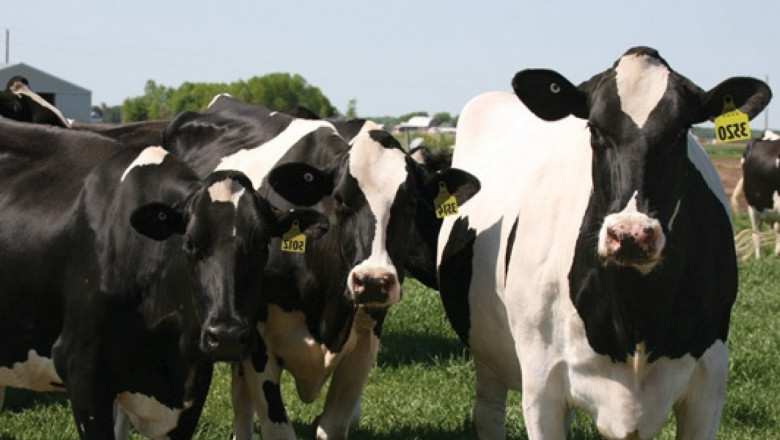Microbes found in the stomach of cows can break down certain types of plastic, including polyethylene terephthalate (PET), used in non-alcoholic bottles, some food packaging and synthetic fabrics.
Scientists have found these microbes in fluid extracted from the stomach – the largest compartment in the stomach of ruminants. These are ungulates such as cattle and sheep, which rely on microorganisms to help break down the coarse vegetation they feed on.
The stomach acts as an incubator for those microbes that digest or ferment food consumed by cattle or other ruminants.
Researchers at the University of Minnesota suspect that some microbes in a cow’s stomach may be able to absorb polyesters, substances whose constituent molecules are linked by so-called ester groups.
In their herbivorous diet, cattle consume a natural polyester produced by plants called quince. As a synthetic polyester, PET has a similar chemical structure to this natural substance.
Quince makes up most of the cuticle, the outer waxy layer of plant cell walls, and can be found in abundance in tomato and apple peels, said study co-author Doris Ribitsch, a scientist at the University of Natural Resources and Life Sciences. in Vienna.
In their new study, published in the journal Frontiers in Bioingineering and Biotechnology, the researchers found that bovine germs could break down not only PET but two other plastics, polybutylene adipate terephthalate (PBAT), used in biodegradable plastic bags and polyethylene. (PEF), made from renewable plant materials.
To assess how well these microbes can break down plastic, the team incubated each type of plastic in a liquid extracted from the stomach for one to three days. They then measure the by-products to determine the extent to which the micro-organisms have degraded the materials of their components.
Abdominal fluid breaks down all three types of plastic, making PEF most effective.
The team then takes DNA samples from the fluid in the abdomen to determine which specific species may be responsible for the breakdown of the plastic.
About 98 percent of DNA belongs to the bacterial kingdom, with the predominant genus being Pseudomonas, which has previously been shown to break down plastics according to publications in Applied Microbiology and Biotechnology and the Journal of Hazardous Materials.
Bacteria of the genus Acinetobacter are also found in large quantities in the liquid and several species have also been shown to degrade synthetic polyesters, according to a 2017 publication in the Journal of Agricultural and Food Chemistry.
Ribic and her team hope to fully characterize the bacteria in the stomachs of cattle that break down plastics and determine which enzymes they use for the purpose.
If enzymes that could potentially be used for recycling are identified, it is possible for microbes to be genetically modified to produce them in large quantities without the need to be extracted directly from the stomachs of cows.
Thus, enzymes can be produced easily, cheaply and in large quantities, for use on an industrial scale, Ribic said.
She and her team have already patented a recycling method in which textiles are exposed sequentially to various enzymes identified in previous developments.
Degrading PET, researchers are still looking for microbes that can handle polyethylene and polypropylene, which have strong bonds between their carbon atoms, Levin said.
He and his colleagues have identified several promising candidates on this front, but it remains to be seen how to maximize the degradability of plastics.
Ribic says her team is also looking for germs that can consume polyethylene, and they wonder if they are also hiding in the cattle’s stomach.
Source: Science Alert – Cows Have Hungry Stomach Microbes Capable of Breaking Down Some Plastics









